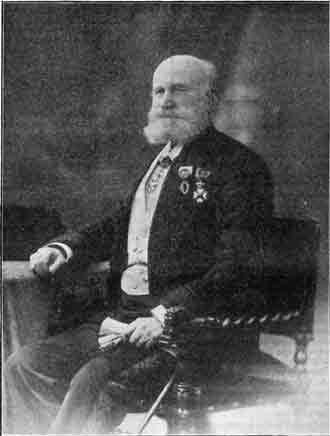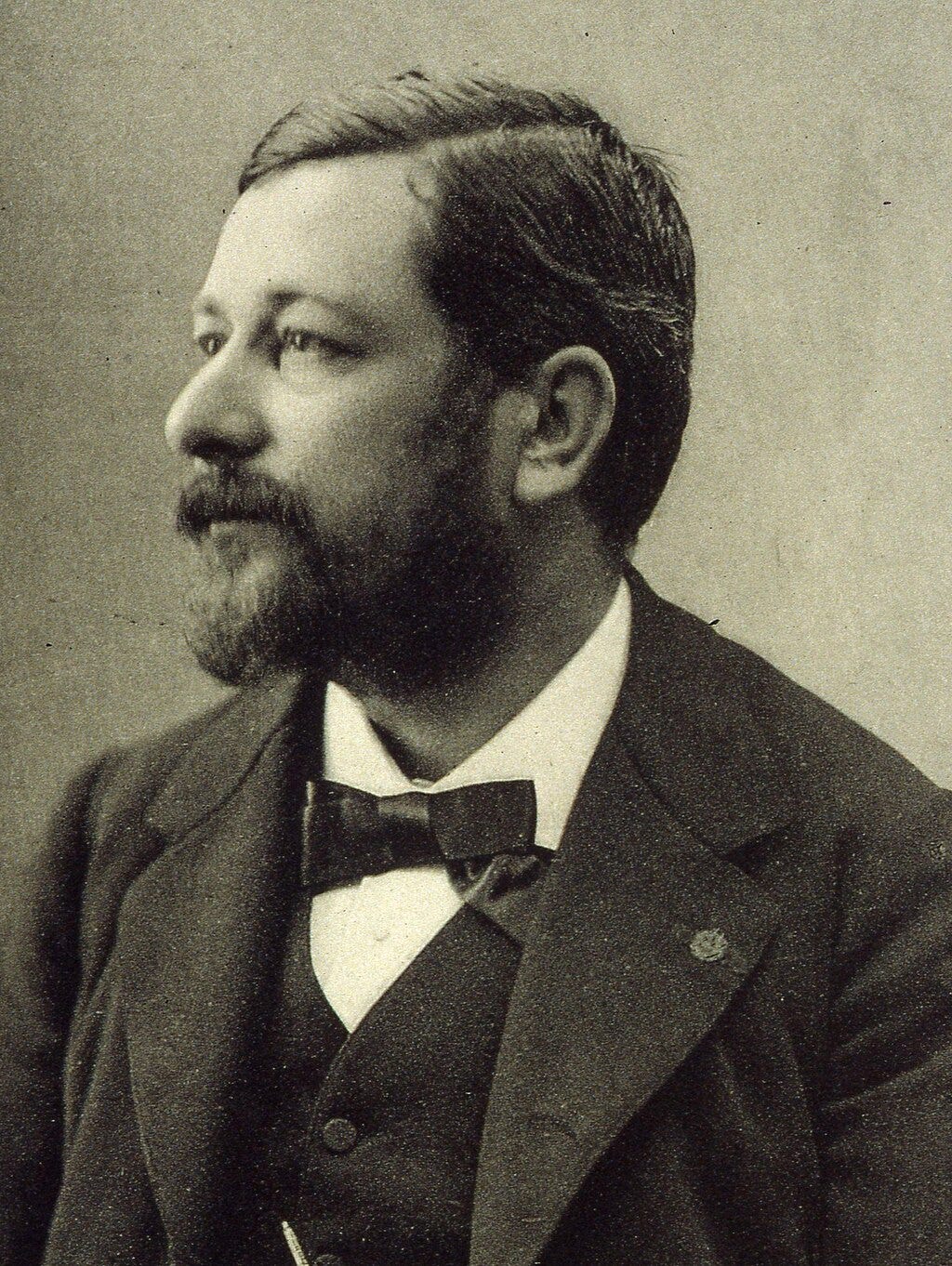The Precession of Mercury's Perihelion Can Be Derived from Weber's and Riemann's Force Laws, Without General Relativity
Maurice Allais (1911-2010) was a French physicist and economist. He won the Nobel Prize in Economics in 1988. In physics, he is best known a) for conducting a number of experiments in the 1950s with a paraconical pendulum that demonstrate that there are gravitational anomalies during eclipses, and b) for publicly supporting the interferometry experimental results of Dayton Miller (1866-1941), who clearly showed that the speed of light is not constant in all reference frames. Were Miller to be correct, then Albert Einstein’s (1879-1955) theory of special relativity would be falsified, as would, necessarily, the theory of general relativity.
Allais graduated at the top of his class in 1933 from École Polytechnique in Paris. In 1996, he published a paper1 supporting Miller in La Jaune et la Rouge, the alumni journal of the École Polytechnique, and responded at length twice23 in 1997 to the substantial correspondence that his 1996 paper had elicited. Allais’s writings in La Jaune et la Rouge were republished in his book L’Anisotropie de l’Espace4 in 1997, whose English-language translation was published as The Anisotropy of Space5 in 2019.
I will focus on the work of Miller and Allais in future posts. In this post, I would like to focus on a specific passage that I found in the first 1997 paper, with respect to the precession of the perihelion of Mercury. Here I am quoting from the English-language translation:
This demonstrates that the [verification] of a theory by an experiment does not prove that the theory is correct. It simply shows the compatibility of that theory with that experiment, and alternative explanations always remain possible.
• In the same way, the explanation of the deviation of the perihelion of Mercury by 43’’ per century is generally presented as being one of the greatest successes of the theory of general relativity. However, the analysis presented by Maurice Lévy on 17 March 1890 to the Academy of Sciences also gives an explanation of this deviation of 43’’ as a linear combination of the equations of Weber and Riemann.(4) Here as well, an explanation of the phenomenon in question is given by two entirely different theories.
From this also, it follows that the agreement of the consequences of a theory with the experimental data cannot be interpreted as a proof of the validity of the theory. [p.630, Allais’s emphasis]
Footnote (4) reads:
It is only necessary to take a value of α = 2 for Maurice Lévy’s coefficient α (p. 549) in order to obtain a value equal to (1 + α) × 14”.4 = 43”.2.
In his Note of 17 March 1890, Maurice Lévy starts from an estimate of 38’’ for the deviation of the perihelion of Mercury, so he is led to take α =−1 + (38/14.4) = 1.63. With the current estimate of 43’’, we reach the value of α = 2 for α, which is an integer and seems much more plausible in this case. [p.630, Allais’s emphasis]
The orbits of the planets around the Sun are essentially elliptical, with one focus of the ellipse where the Sun lies. As a result, the distance of the planet from the Sun varies. When it is at its closest, this is called the perihelion; when it is at its furthest, this is called the aphelion. But it turns out that the ellipse is itself moving around the Sun, so at each perihelion the planet has moved a bit further from the previous perihelion; this is called the precession of the perihelion.
For most planets, the precession of the perihelion is not that significant, and can be explained with Newtonian gravity as the perturbation of the planet’s orbit by the presence of other celestial bodies in the solar system. But Mercury’s precession of the perihelion exceeds this perturbation by about 43’’ per century.
Allais claims that the French engineer Maurice Lévy (1838-1910) found an explanation in 1890 for the excessive precession of the perihelion of Mercury, twenty-five years before Einstein published his theory of relativity. I had never heard of this, so I went searching the archives of the Comptes-rendus de l’Académie des Sciences, which are available from the Bibliothèque Nationale de France’s website6. I found that Lévy referred to previous work by the French astronomer Félix Tisserand (1845-1896):
F. Tisserand (30th September 1872). Sur le mouvement des planètes autour du Soleil, d’après la loi électrodynamique de Weber7.
F. Tisserand (17th February 1890). Sur les mouvements des planètes, en supposant l’attraction représentée par l’une des lois électrodynamiques de Gauss ou de Weber8.
Maurice Lévy (17th March 1890). Sur l’application des lois électrodynamiques au mouvement des planètes9.
I translated into English the three articles, have uploaded the PDFs for the three here on Substack, and will summarize the results below. In each of the three articles, the authors propose replacing Newton’s law with a force law for electrodynamics, first Wilhelm Eduard Weber’s (1804-1891), then Carl Gauss’s (1877-1855), then a linear combination of Weber’s and Bernhard Riemann’s (1826-1866).
Tisserand, in his 1872 paper, “About the movement of the planets around the Sun, according to Weber’s electrodynamic law”, proposes replacing Newton’s law with Weber’s force law, which I previously presented in my post Two Productive Research Programs in the Early 19th Century. Using Weber’s law, Tisserand calculates that there would be a precession of Mercury’s perihelion of 13’’.65 per century.
Tisserand, in his February 1890 paper, “On the movements of the planets, supposing the attraction represented by one of Gauss’s or Weber’s electrodynamic laws”, compares using Weber’s and Gauss’s force laws. Tisserand calculates that with Gauss’s law, there would be a precession of Mercury’s perihelion of 28’’.2 per century.
Lévy, in his March 1890 paper, “On the application of electrodynamic laws to the movement of planets”, responds to Tisserand. He criticizes the use of Gauss’s law, as it does not take into account the relative accelerations of two bodies, and so does not respect the principle of conservation of energy. Rather, he considers Weber’s and Riemann’s force laws; the former uses the relative radial velocity, while the latter uses the relative velocity. For electrodynamics, the two give identical results; hence any linear combination of the two will also give identical results. Lévy introduces a parameter α for this calculation, and explains that for the 38’’ estimated value at that time for the secular precession of Mercury, α = 1.63.
What Allais demonstrated in the quoted passage above is that if we consider the current estimated value of 43’’ for the secular precession of Mercury, then α = 2.
For those interested in a more technical discussion, here is the key passage from Lévy’s paper.
The structures of Weber’s (P₁) and Riemann’s (P₂) laws are similar, but they use different velocities. For Weber’s law, it is the relative radial velocity, while for Riemann’s law, it is the relative velocity. If both velocities are relevant, it would seem that there might be some kind of torque generated by their difference that would provoke the excessive precession of Mercury’s perihelion.
It is important to remember that Lévy’s work was conducted long before anyone had ever heard of the theory of general relativity. Yet, I have read on numerous occasions that it was Einstein’s result that first explained the excess precession of Mercury’s perihelion. This is clearly not the case.
I think that it is interesting in this post, I wrote about three French researchers (Tisserand, Lévy and Allais) who worked with the electrodynamic force laws of three German researchers (Gauss, Weber and Riemann). This is an example of the Continental science that was thrown out in the second half of the 19th century, as I wrote about in an earlier post, How Two Productive Research Programs Were Consciously Thrown Out.
If you wish to donate to support my work, please use the Buy Me a Coffee app.
Maurice Allais. Les expériences de Dayton C. Miller, 1925-1926, et la théorie de la relativité. La Jaune et la Rouge 517:29-37, juin/juillet 1996.
Maurice Allais. Les expériences de Dayton C. Miller, 1925-1926, et la théorie de la relativité. Réponses aux observations des lecteurs. La Jaune et la Rouge 526:43-50, juin/juillet 1997.
Maurice Allais. Les expériences de Dayton C. Miller, 1925-1926, et la théorie de la relativité. Réponses aux observations des lecteurs. La Jaune et la Rouge 527:69-77, août/septembre 1997.
Maurice Allais. L’Anisotropie de l’espace. La nécessaire révision de certains postulats des théories contemporaines. Les données de l'expérience. Éditions Clément Juglar, 1997.
Maurice Allais. The Anisotropy of Space. The necessary revision of certain postulates of contemporary theories. English translation by Thomas J. Goodey, René Verreault and Arjen Dijksman. Paris: L’Harmattan, 2019.
Bibliothèque Nationale de France. https://gallica.bnf.fr
F. Tisserand. Sur le mouvement des planètes autour du Soleil, d’après la loi électrodynamique de Weber. Comptes-rendus de l’Académie des Sciences LXXV:760-763, 1872.
F. Tisserand. Sur les mouvements des planètes, en supposant l’attraction représentée par l’une des lois électrodynamiques de Gauss ou de Weber. Comptes-rendus de l’Académie des Sciences CX:313-315, 1890.
Maurice Lévy. Sur l’application des lois électrodynamiques au mouvement des planètes. Comptes-rendus de l’Académie des Sciences CX:545-551, 1890.







John, your work is fantastic! Thank you very much, and a special thanks for the translations.
I wonder if you have come across Paul Gerber? He also derived a formula that exactly described the anomalous precession of Mercury’s perihelion, and this was seventeen years before Einstein's general relativity. In Gerber’s paper, ‘The Spatial and Temporal Propagation of Gravity’, he derived his equation from Newton’s universal law of gravity by proposing that gravity propagated at the speed of light (instead of instantaneously, as Newton had assumed). Gerber achieved the correct result by employing a time-delayed radial distance between the two masses (Mercury and the Sun), proving that relativity is not required. Reference: Die raurnliche und zeitliche Ausbreitung der Gravitation. Zeitsch. f. Mathem u. Physik 1898 vol. 43 pp.93-104 Cited in: Jaume Giné’s On the origin of the anomalous precession of Mercury’s perihelion. Chaos, Solitons and Fractals 38 (2008) 1004–1010.
Another strong argument for the electrical nature of the Cosmos!